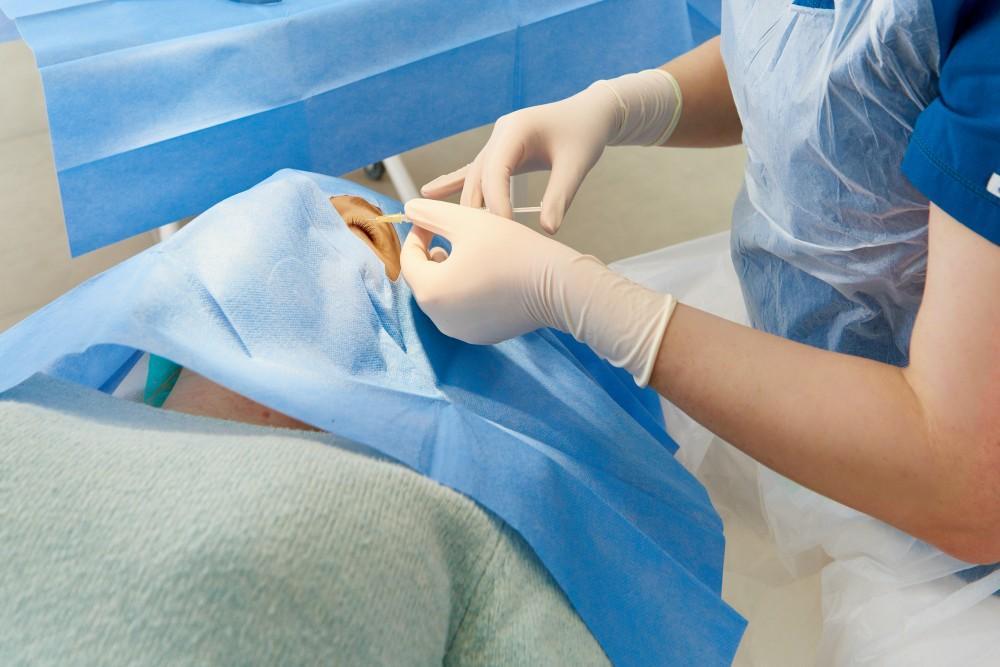
Nonproliferative Vs. Proliferative Diabetic Retinopathy

Diabetic retinopathy is the most common eye complication of diabetes, where high blood sugar causes blood vessel damage in your retina, the light-sensing tissue at the back of the eye. Uncontrolled high blood pressure can also play a role.
At Retina Specialists, our expert team of retinal ophthalmologists understands the problems diabetes can cause to your eye health, including diabetic retinopathy, which, if left untreated, can lead to vision loss. Here’s what you need to know about the condition and its two distinct phases.
The structure of your eyes
To understand what occurs with eye disorders, it helps to understand how the eye works. The best way to do this is to follow the path light takes as it moves through your eye.
The surface of the eye is covered with a tough outer membrane that’s both clear (so light can pass through) and curved. This membrane is the cornea, which, due to its curvature, focuses light while protecting the eye.
Light next travels through an area called the anterior chamber, which is filled with a protective fluid known as the aqueous humor. Then, it moves through the pupil (a hole in the iris) and through a lens that focuses it more finely. Finally, it passes through another fluid-filled chamber called the vitreous, and, finally, strikes the back of the eye, where the retina lies.
The retina converts the images contained in the light into electrical signals, which it sends to the brain through the optic nerve for decoding.
The central region (only 2% of the tissue) of the retina is specialized for seeing fine detail in your central vision. This small area is called the macula. Blood vessels in and behind the retina nourish and support the macula.
What is diabetic retinopathy?
Diabetic retinopathy is an umbrella term for all retinal disorders caused by diabetes. There are two major types: nonproliferative and proliferative.
Nonproliferative retinopathy
Nonproliferative retinopathy is the most common form of retinopathy. Here, blood vessels in the back of the eye swell up and form pouches. The condition can move through three stages (mild, moderate, and severe), as increasingly more blood vessels become blocked.
Macular edema is the swelling of the macular tissue as blood vessels become blocked. The vessel walls may become unable to control the flow of substances between the blood and the retina, and fluid leaks in. When the macula swells, a condition called edema, your vision blurs, and you may lose it completely.
Although nonproliferative retinopathy usually doesn’t require treatment, you do have to treat macular edema to prevent vision loss. Treatment has proven effective at stopping and sometimes reversing that loss.
Proliferative retinopathy
Nonproliferative retinopathy can progress after several years to a more serious form called proliferative retinopathy. Here, the blood vessels become so damaged they close off, and, in response, new blood vessels start growing in and on the retina.
These new vessels are weak and can leak blood onto the tissue, blocking vision. They can also cause scar tissue to grow. As the scar tissue shrinks, it distorts the retina or even pulls it out of place, a condition called retinal detachment. This is a serious condition that requires emergency treatment to prevent permanent vision loss.
Most people with nonproliferative retinopathy don’t have symptoms, and even some with the proliferative form have no symptoms until it’s too late to treat. This makes it especially important to have a comprehensive diabetic eye exam at least once a year. If the condition is caught early enough, it may be possible to slow or stop the progression.
If you’re a diabetic and haven’t had your eyes checked in a while, now is the time to come into Retina Specialists to ensure all’s well. Call any of our five Texas offices — in Dallas, DeSoto, Plano, Mesquite, and Waxahachie.
You Might Also Enjoy...


Vitrectomy: The Outpatient Surgery That Can Save Your Vision

When to Seek Treatment for Eye Trauma

What Happens During a Diabetic Eye Exam?

Diagnosing and Treating an Eye Tumor


